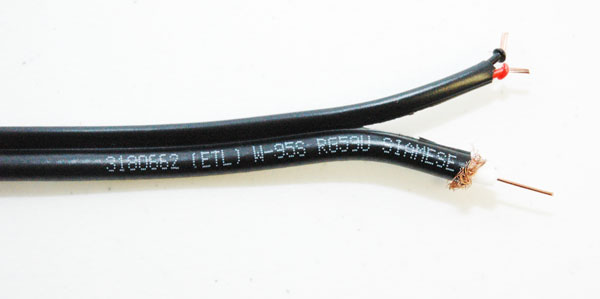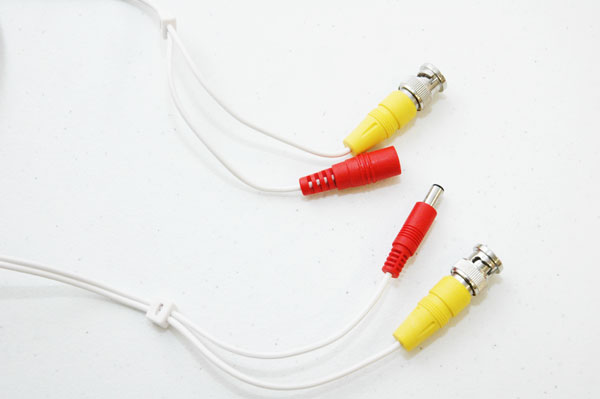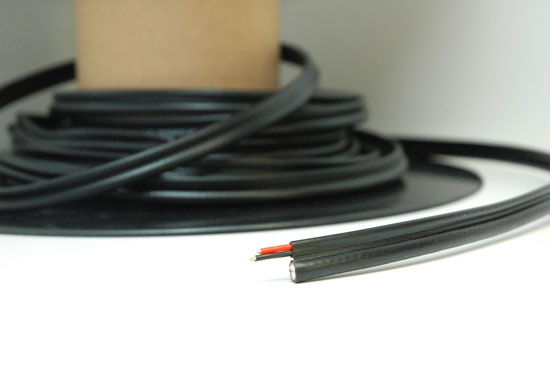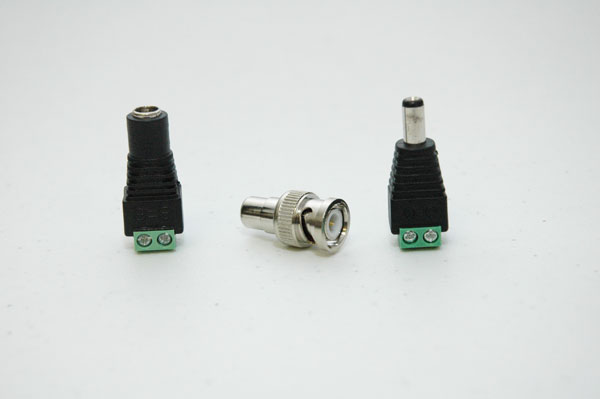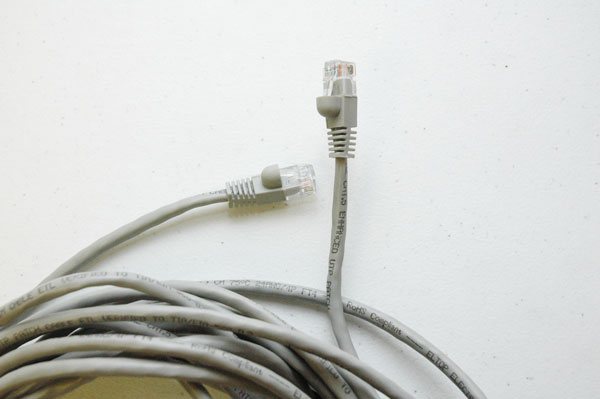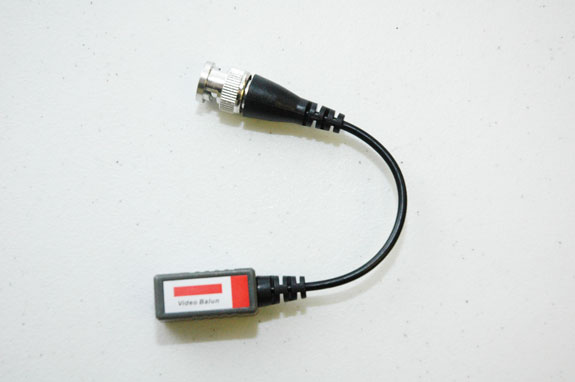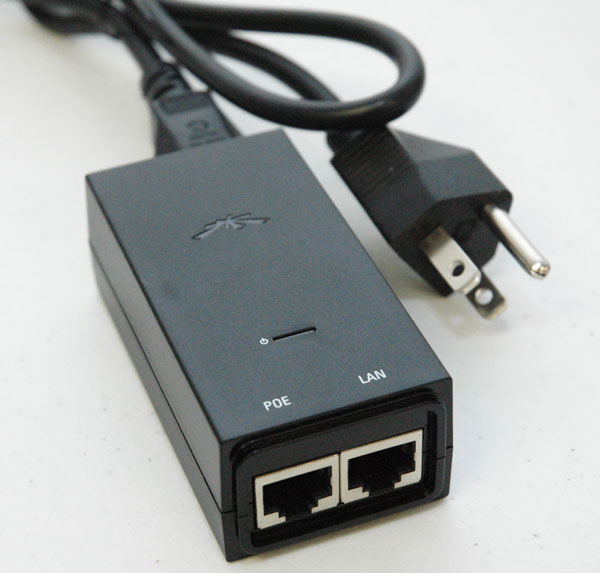After choosing the proper cameras and equipment for your surveillance needs, the next decision is choosing the proper cabling to run with these systems. We cannot stress this enough, understanding the properties of these different types of cabling and how they interact with your systems is crucial in maintaining an efficient and effective cctv system. In fact, this is one of the most important details to consider. Implementing the proper cabling and understanding its role in your system will save you immense amounts of headache later and calls to tech support to resolve issues that wouldn’t have happened with the correct cabling types.
This article will go into depth about the properties of each cable type, teaching you the capabilities and drawbacks of each type. You will be able to reference this article when planning for your own security systems. Proper cabling is crucial as many issues can arise from using the incorrect cables for your system. Some of the problems that can occur range from poor connection/video degradation from trying to run a camera too far on under powered cabling. You can even completely burn out cameras from using incorrect power/voltage. These issues are very serious and hinder your ability to have the most secure system possible.
Siamese Coaxial Cables
Siamese cables are actually two different cables fused together to provide both video connection and power connection. The coaxial cable is RG59, you will be able to tell from the printed markings on the cable. The video portion of the siamese cable runs a video connection from your security camera to your DVR, while utilizing BNC connections. the power cable supplies the power needed to keep your camera running from the CCTV power box. Siamese cable is appropriate for use with any standard definition security camera system (aka analog CCTV), or HD over coax systems utilizing either HD-CVI or HD-TVI cameras.
One of the biggest factors to keep in mind when selecting the right siamese cable type is determining the proper gauge needed for your system. These different gauges are determined by its AWG (American Wire Gauge) rating. An easy way to remember is that the smaller the gauge, the thicker the cabling is and thus enables it to supply more power effectively. Pre-made coaxial cables are of a thinner gauge (26 or 27 awg), while spooled siamese cable is normally 20-18 awg.
Pre-made Siamese Coaxial (analog only)
Pre-made cables are typically of a thinner gauge. They will seem especially thin when compared to traditional coaxial cable from a spool. They are thin because not only is the actual wire thin (26awg), it also lacks the shielding that is commonly found in spool type coaxial cable. This wiring type comes with BNC and power connectors pre attached, eliminating the need for extra connectors or having to attach them yourself. This is a very economical and convenient way to connect your cameras. Unfortunately because of the thinner gauge, this type of cabling should only be used with standard definition analog systems supporting up to 960H cameras. HD-TVI and HD-CVI should not be used with this type of cabling as multiple issues can arise. Pre-made coaxial cables are efficient up to 150 feet, but it is not recommended to go farther than this because the gauge of wire used on the power side of the cable is so thin that it cannot provide sufficient current for security cameras with infrared. On the video side, the thin gauge cable can also lead to ghosting and other video disturbances when used for more than 150ft.
Spool Siamese Coaxial (Analog or HD over coax)
Spooled coaxial is the more traditional alternative to pre-made coaxial cables. Also referred to as RG59U 18/2 Siamese cable, there are two wires fused together providing both power and video connectivity. The power cable is normally 18AWG, and the video coaxial cable itself is normally 20AWG. This is a substantial difference to pre-made siamese cables. This thicker coax cabling comes off a spool available in lengths of 500ft or 1000ft, and enables you to find the exact length you need and cut to size. There are no connectors already attached so after cutting the wire to the proper length you must go through the process of attaching the power and BNC connectors for your hookups.
[link to video for attaching connectors]
[https://www.youtube.com/watch?v=3UqkPTfRtbA]
There are two main types of coaxial cables in cctv systems, most being copper clad. This means that the solid center conductor is an aluminum or silver mix, but a copper shell encases (or clads) the conductor. This type of cabling is great for wire runs of up to 300ft but it is not advised to push its limits in trying to stretch it further as video degradation can occur.
If distance is a crucial factor, there is another option to implement. Solid copper (aka full copper) coaxial cables allow for far greater video transmission. For use with analog CCTV signals, you can run up to a 800ft wire to transmit video, where normally the video transmission capability will surpass the power transmission capability. You will have have to account for providing power from a source near the camera if using 12V DC. If you are using 24V AC then power is not an issue. Full copper siamese cable is excellent for HD-TVI and HD-CVI systems where runs longer than 250ft are required. Otherwise, without solid copper coaxial cables, you will experience substantial video degradation.
Cat5e ethernet Cables (Analog or IP)
This is another cable type popular for use in CCTV systems and essential to IP camera systems. First it is important to note that there is a significant difference between Cat5e and traditional Cat5 cables. Regular Cat5 is of poor quality and should not be used with CCTV products or problems will frequently occur if it works at all. Cat5e cabling is however a great choice for analog systems and required for use with IP network camera systems.
Cat5e cables also extend the range of video transmission for analog cameras up to 3000 feet without issue. However, to use Cat5e cabling with analog systems, a video balun must be attached. Cat5e cables are not set up for analog use, therefore a balun is really just a converter, converting Cat5e cables to make them compatible with analog systems. There are many different baluns to choose from depending on your needs.
When using Cat5e cables in conjunction with IP cameras there is another factor to keep in mind. How you are powering your IP cameras will make a big difference in performance and distance restraints. Power over Ethernet (PoE) enables you to establish both power and video connection off one single cable. Without utilizing PoE you will still need to power your cameras with a separate cable. Network IP cameras will have a network cable port on their “pigtail”, whether or not the camera has POE capabilities.
Using a POE adapter enables you to turn your camera without PoE capability into a Camera that has PoE abilities. This enables an easy connection and allows you to keep your power supply somewhere more convenient and cuts down on the bulk of cabling that can become a hastle. Using either PoE or non-PoE cameras, the max data transmission distance is 328ft. For longer distances, use of network extenders is required. Although UTP network cabling is great for analog CCTV use, it is limited when used with network ip cameras.
Anthony Berlin
Latest posts by Anthony Berlin (see all)
- Dummies Guide To Remote Viewing Security Cameras - November 5, 2018
- How to add IP cameras and HD Cameras to your Hybrid DVR - May 17, 2016
- How to change the order of IP cameras connected to your PoE NVR - February 29, 2016



